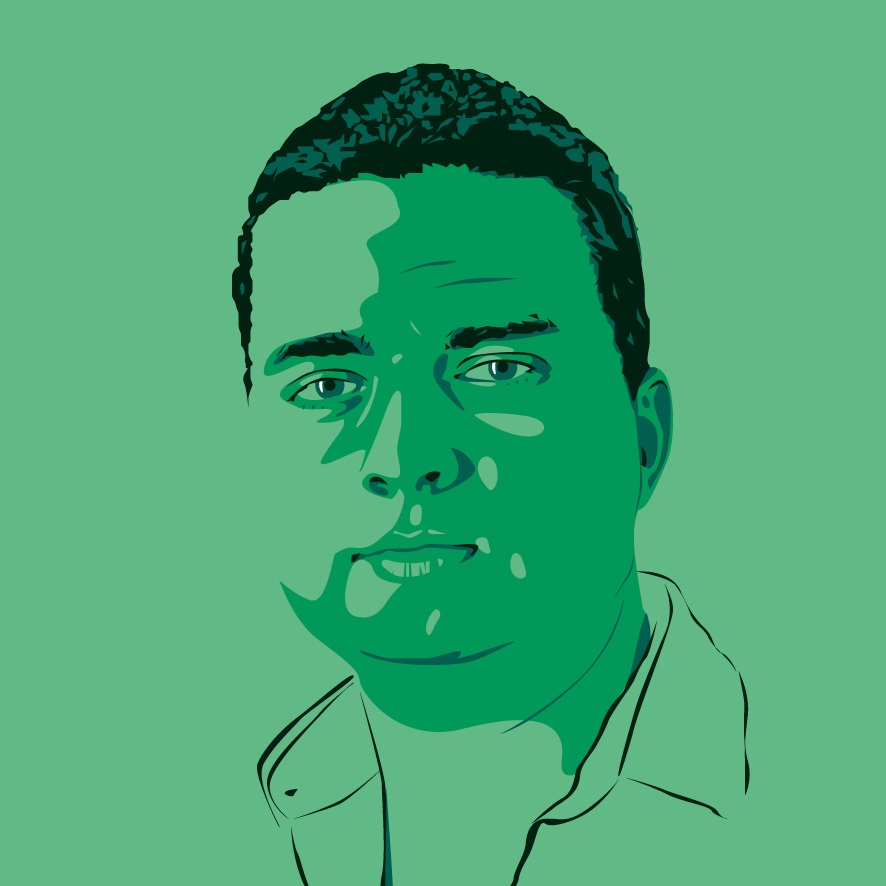Two Point Hospital hands-on: Theme Hospital fans are getting the exact game they want
Manage an entire healthcare organisation in this simulation game from former Bullfrog and Lionhead staff.
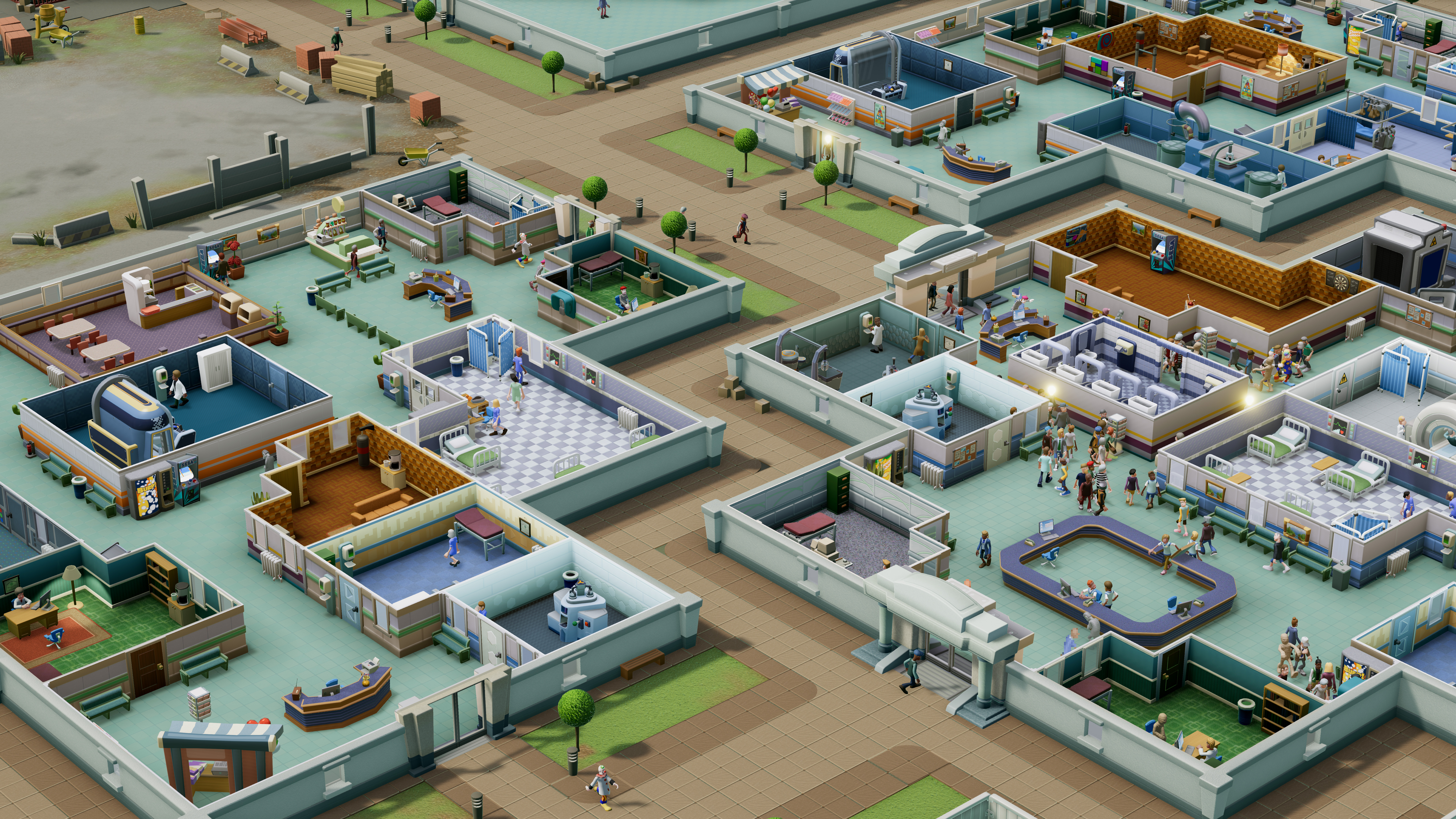
My hour with the first level of Two Point Hospital is comforting, more than anything else. Like playing Cities Skylines, or any other modern interpretation of a management sim that hasn't been treated too well in recent years, it's nice to immediately know how to play a game like this then gradually learn the ways it differs.
In Two Point Hospital's case, it's mostly how the structure has changed from Theme Hospital. Instead of building up a hospital, hitting the criteria to beat the level and abandoning it for the next one as per its Bullfrog predecessor, Two Point Hospital has you managing a whole healthcare organisation, comprising of many different hospitals.
For each one, you have a scoring criteria described to me as Overcooked-like—you earn stars depending on the performance of the hospital. One star represents basic completion, and from there you can move on to the next hospital, if you want. You can also complete bonus objectives to unlock two more stars, though. In my demo, these extra stars were earned by making a certain amount of money, curing a set number of patients and levelling up my hospital, which I found simple enough. What these bonus objectives are will vary depending on the hospital's location, however.
"We try and get you to focus on different things in each hospital," says lead designer Ben Huskins. "This is a research hospital, here's a teaching hospital, this one's all focused on hygiene levels and making sure you pass all your health inspections." You might also inherit a hospital that's in a terrible state, where sorting out its problems will be the main objective. An industrial, run-down area might make it hard to hire decent staff, forcing you to train some up. A hot area could have bad hygiene, so you'll need to keep the place cool. If you're struggling to get two or three stars, whatever you research in subsequent hospitals will carry across to your entire healthcare organisation, so you can revisit tricky levels at a later point in the game. The idea is the game can be non-linear, if you want to play it that way.
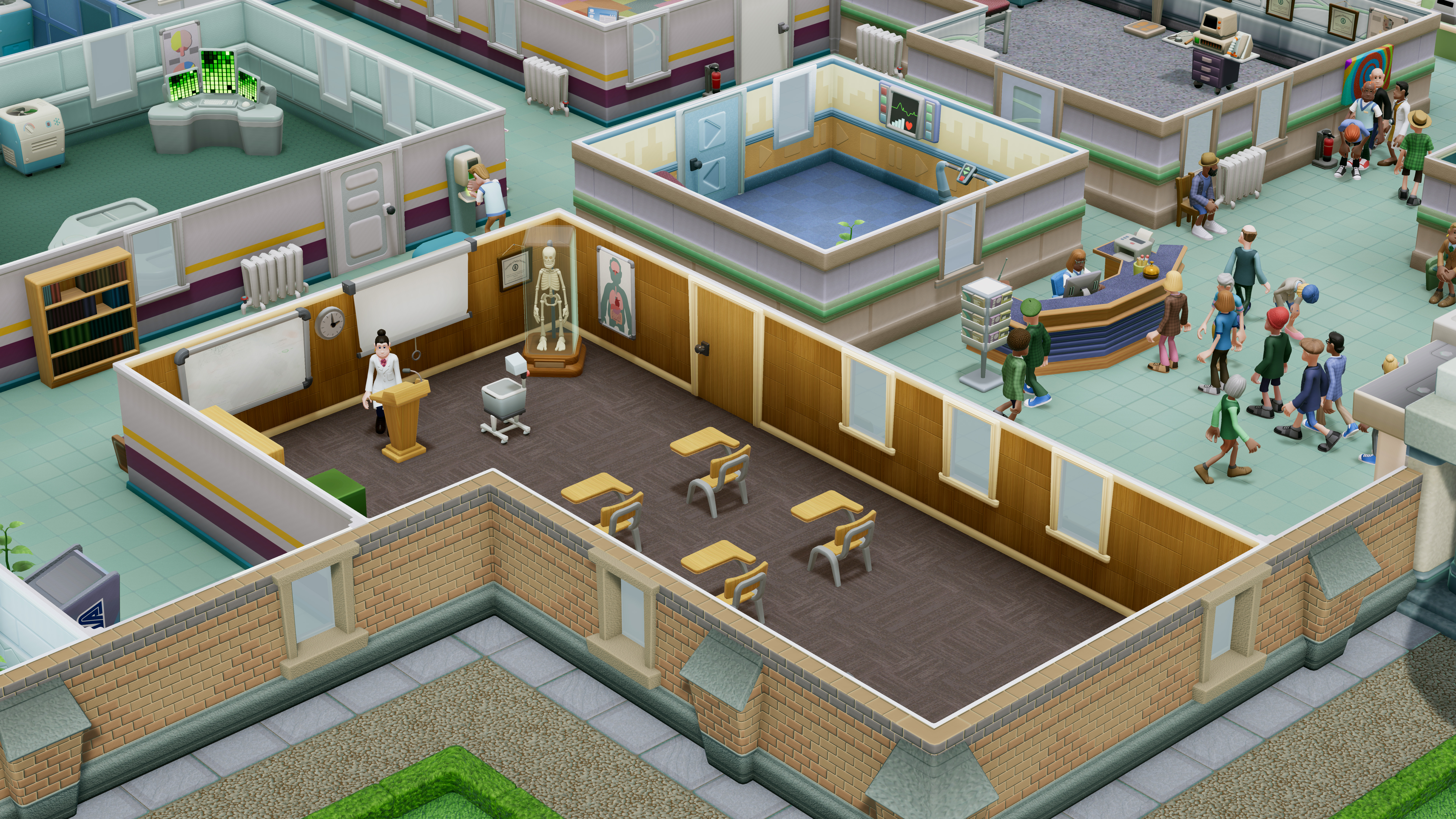
"As well as being able to keep hold of all your hospitals and revisit them, it's good to have certain things that carry across your whole career as a hospital administrator, and research is one of those things. When you do some research in a hospital, those research points that you're earning, that you make to a research project, that carries across between your hospitals.
"For example, researching an upgrade for your X-ray machine," Huskins says. "Let's say it's hospital four you visit. You might only get halfway through researching that project, but you can jump to one of your other hospitals and think, 'you know what? I'm going to continue that work here'. Because it's tracked at the organisation level, you continue where you left off in the previous hospital, and so you can then finish off that project in that hospital. Now I've got that upgrade for my X-ray machine, I can apply that to any of my machines in any of my hospitals. We like that idea that these discoveries you're making through research, you can start to use them in all of your hospitals, and maybe it helps you get that third star you were struggling with in that earlier hospital."
The other key thing here for me is underlining the sense of player ownership for a hospital. These management sims are ultimately about making your operation run like clockwork, but I'm sure many players, like me, enjoy the act of creating something just as much, and would appreciate the opportunity to revisit their hospitals in a kind of sandbox mode even when they've got those three stars.
The biggest gaming news, reviews and hardware deals
Keep up to date with the most important stories and the best deals, as picked by the PC Gamer team.
"I think one of the things we learned over the last 20-odd years from the games we've made—The Movies, Fable, playing other people's games, and also looking back at what people said they like about Theme Hospital—it just varies," says Two Point Studios co-founder Mark Webley. "Some people really enjoyed making aesthetically pleasing reception areas. Some people just want to be super efficient and make as much money and they really don't care what it looks like, and they'll have rooms right next to each other to maximise walk times. People play differently."
Ward gaming
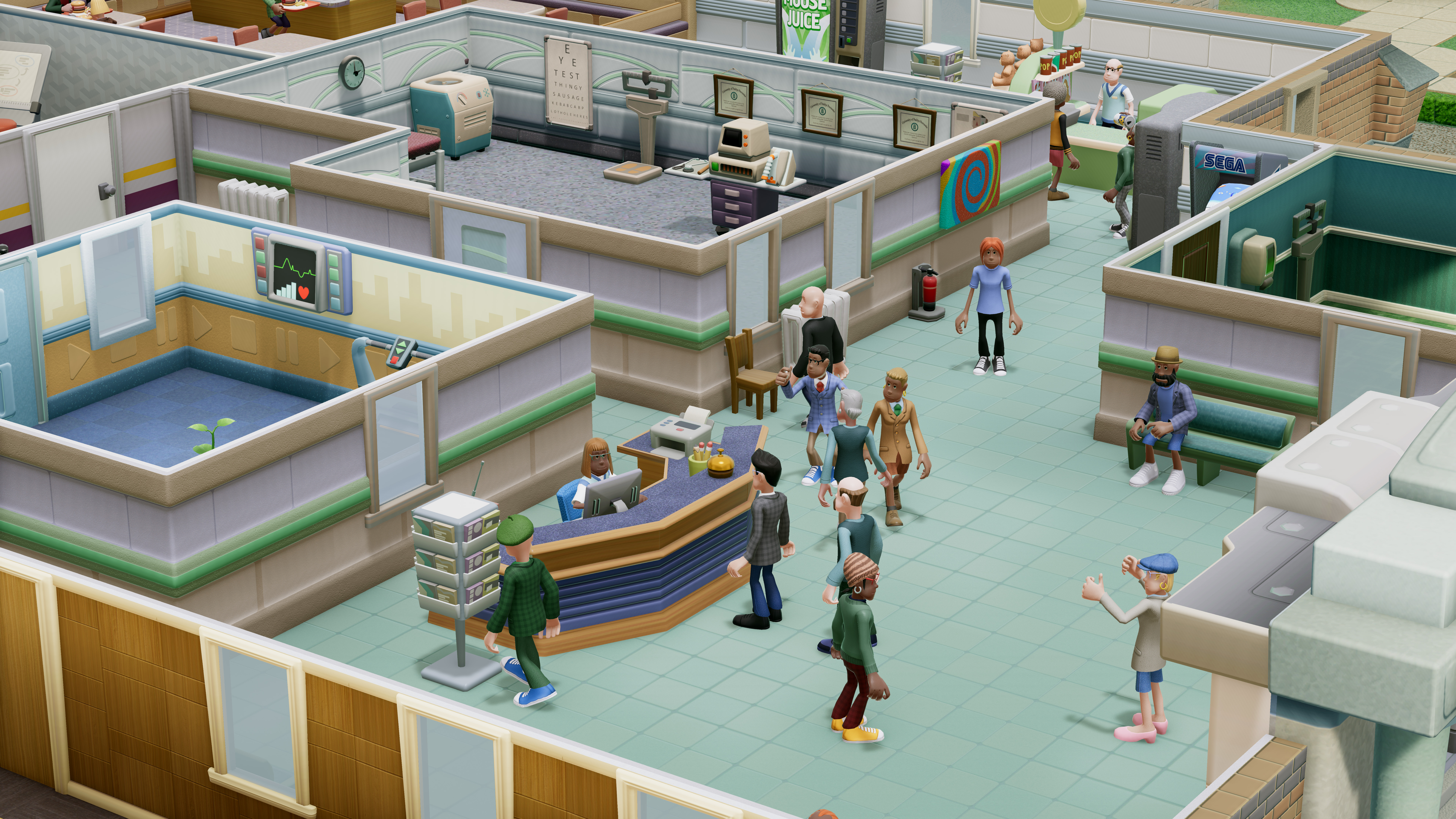
The opening moments of a Two Point Hospital game feel pretty similar to Theme Hospital. I build a reception desk, a GP's office and a pharmacy. I hire a few doctors and nurses to staff them. I drop in some waiting benches for my incoming patients, plus a drinks machine. From there, I add another GP's office, another pharmacy and a staff room with a comfy chairs and a dartboard. In each room, you'll be required to place certain objects depending on what the room's function is, but you can then spend extra money to add little niceties when you've finished the essentials.
"It's fine at the start of the game to build quite a utilitarian room," Huskins says. "It's the minimum size and has the required items in it. As you progress, we want people to start making a slightly bigger room, a more interesting shape, start putting in things like windows, a plant and put a picture on the wall. Add that little medical cabinet, the rug, that sort of thing, and start to build a more interesting room that'll keep the staff happier and the patients happier as well."
All the objects you place in Two Point Hospital will snap to a grid by default, which lets you build a hospital in almost no time at all. One button, though, lets you place furniture and other objects with lovely, satisfying precision: you can put your benches so close together that they'll take up less overall space, and personalise the placement of items throughout your hospitals.
I then build a General Diagnosis for diagnosing new illnesses, and a De Luxe clinic for curing lightheadedness—namely, when patients have lightbulbs for heads, one of the game's fictional illnesses. When the bins need emptying, I hire a janitor. When people start dying in the corridors and ghosts haunt the place, I hire a more expensive janitor who specialises in capturing ghosts (the spirits of which can ominously be used for research later). As ever, the challenge is how you use the space for the optimum results. But I spend plenty of time just zooming in on the people wandering through my hospital to see what they're up to. There are no oceans of vomit in this hospital, Theme Hospital fans, but I'm assured we can expect puddles of sick from some of the game's other diseases.
The animations are beautifully intricate: my favourite is the Ghostbusters-esque way that my janitor hoovers up the spirits of the dead in my hospital, but I also love how lightheadedness is cured by unscrewing the giant lightbulb on a patient's body and disposing of it. Zooming in and seeing this sort of granular detail makes your hospital and the people within it feel more real. This is clearly where 21 years of progress make a huge difference to the quality of the game. The rounded faces of the characters make me think of '90s claymation in a good way. I like that Two Point County is a warm-feeling world, going in the opposite direction to the sort of cheap-looking character designs often associated with the hellscape of F2P mobile clones.
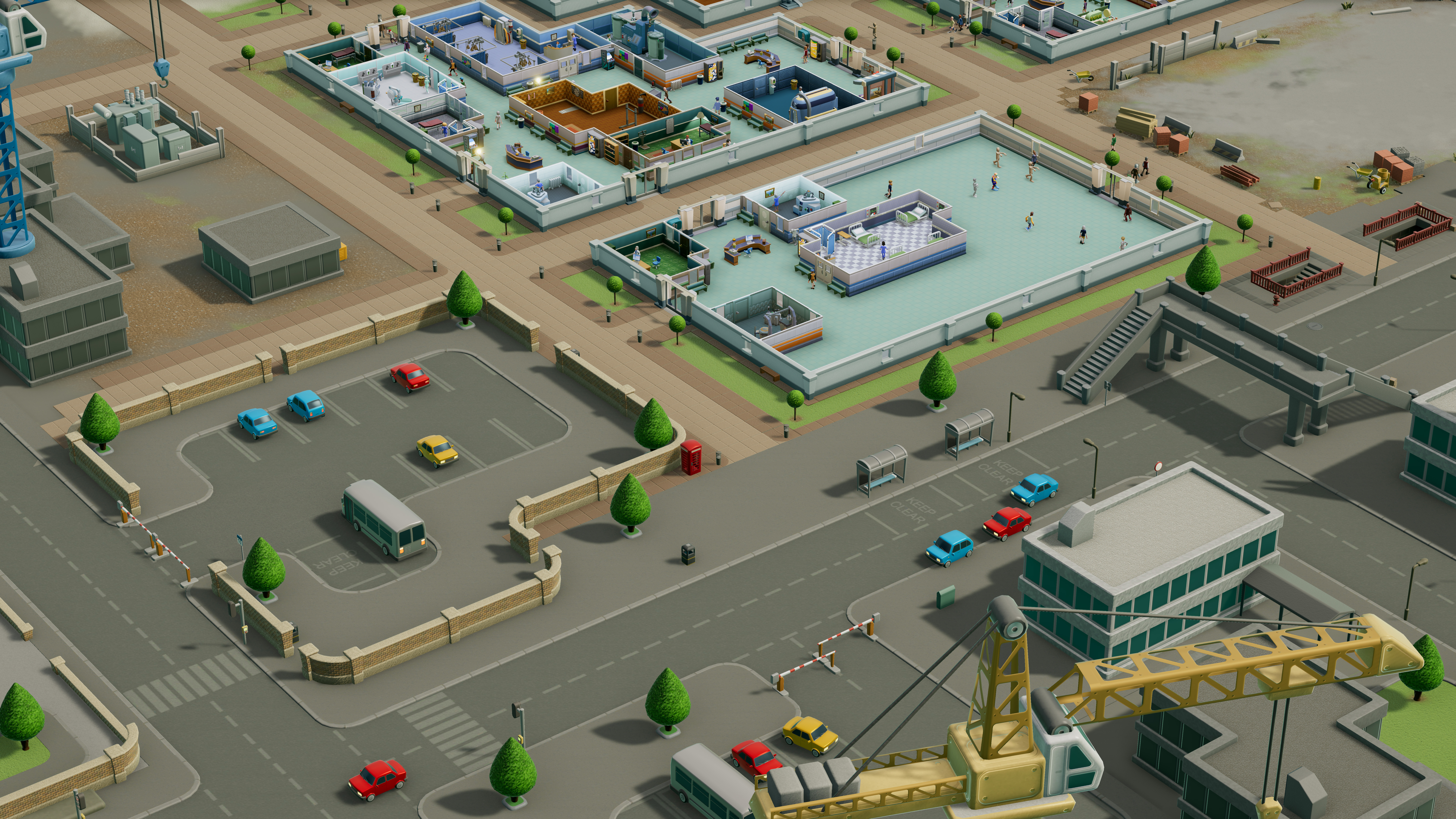
The sense of humour is spot-on for me, too, and pretty similar to the tone of Theme Hospital. There's a few jokes I enjoyed from the game's radio: one fictional song is called 'Nice-Smelling Face', which is a bit Spinal Tap, and there's a reference to Looper as the DJ explains how his arm just vanished, possibly as a result of the actions of his future self. Crucially, it's not too tryhard and there's not too much of it, which is often the case with in-game radio stations that attempt comedy.
It's a county radio station, rather than a hospital-only one. Huskins explains why. "Two Point Radio station is this great way of just giving you a sense of what's happening in the wider world, and giving you little hints at things you'll encounter later in the game, and characters that you'll encounter at some point, places you'll end up going to. So that was a big part of it as well: giving you a flavour of the world you're based in." The radio will also occasionally react to what happens in your game.
There's a secondary currency that lets you unlock new items to buy for your hospitals. After I'd got my hospital up to three stars and had cash to burn, I added two Sega arcade machines which show a little clip of Sonic running on them when you zoom in, as well as a newsagents and an energy drinks-specific machine, as an ode to a terrible past habit of mine. With mod support planned for shortly after launch, I'd like to see what other interesting objects people will put in the game to help you personalise your hospitals, and most importantly, if someone can swap Sonic on those arcade machines for Dr Robotnik's Mean Bean Machine. I'd also like to hire Dr Knuckles as a GP.
While there are many simulated elements in the game, the UI deliberately keeps it nice and simple. It's easy for hardcore players to access the stats of their staff and finances, but also simple for new players to spring up a working hospital in no time. Crucially, while it does feel a lot like Theme Hospital to me when it comes to the basics of managing a hospital, the dynamic of a larger healthcare organisation could be a very different challenge—though naturally I don't get a sense of it in this one-level demo.
This opening experience, though, will give Theme Hospital fans exactly what they want. That is, a management sim that starts steady, gradually escalates and reminds you of a game you used to love—a comforting experience.
